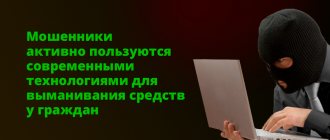Statistics from our state show that most crimes are committed intentionally. However, not every crime demonstrates the fact of premeditation in committing the crime. In this case, it is necessary to prove the fact of its presence or absence. It happens that investigators deliberately do not see obvious facts and only an experienced criminal lawyer can prove the absence of intent in committing a crime. However, let's look at the most important points.
ATTENTION : watch also the video with advice from a criminal lawyer and write your question in the comments to resolve the problem as quickly as possible.
Anticipation of socially dangerous consequences
By intent, the legislator means the most common form of guilt for which punishment is threatened. According to statistics, nine out of ten crimes are committed intentionally. For example, when forging documents, you should take on the challenge of proving the question: who exactly forged the document, since forgery of documents clearly indicates that there was careful preparation to commit a crime, which means intent is present. It is worth noting that the lack of intent will be proven in the following cases:
- The person did not want the consequences of the crime to occur;
- The person could not foresee the onset of socially dangerous consequences of the crime committed;
- The person did not realize the danger of his actions in relation to the public.
Foresight means that a person knew what might happen and deliberately took action to implement his plan. However, lawyers advise their clients either not to testify against themselves and their loved ones, or to directly point out the fact that there was no criminal intent in the actions of the accused, or to prove their innocence, how to prove their innocence in court by reference.
Proof
In order for a person who committed fraudulent actions to be punished, the fact of the crime must be proven.
In the case of Article 159, the plaintiff must prove the presence of malicious intent , that is, confirm the existence of deception or breach of trust.
Evidence of fraud will be:
- providing knowingly false information to the victim;
- concealment of information about the transaction;
- providing false information;
- committing actions that subsequently contributed to the commission of illegal actions, for example, misleading the victim.
Attention! The deception must be intentional. Otherwise, it is not classified under Article 159.
Evidence of breach of trust is:
- lack of supporting documents and witnesses for the transfer of finances, property or securities;
- falsification of documents allowing the parties to trust each other;
- the fraudster has gained the victim’s trust through social status or financial means;
- the fraudster received an advance payment, thereby confirming his readiness to fulfill his obligations.
When is evidence considered illegal?
The following cannot be attached to the case as evidence of guilt:
- information or data obtained illegally;
- guesses, opinions or assumptions;
- information obtained from sources not provided for by law;
- excerpts from television programs, newspaper and magazine clippings;
- information obtained from operational investigative activities of a covert nature.
In other words, if the plaintiff has such evidence as described above, he will most likely win the case; if he does not, you, the defendant, will win.
How to prove the absence of intent in a criminal offense?
Many factors influence the proof of intent, for example: surveillance of the victim or the use of improvised means to commit a crime. In practice, there are the following types of criminal intent:
- Premeditated;
- Arose suddenly.
When a lawyer enters criminal proceedings to protect his client, he must understand what will be best for him, admit guilt in the fact that the intent to commit a crime was nevertheless planned in advance or arose immediately before the commission of the crime and this will affect the fact of repentance and admission of guilt at sentencing. Or defend the position that the person could not foresee the consequences. The lawyer begins to conduct his own investigation in which he collects evidence and takes the following actions to collect it:
- Witness's testimonies;
- Video shooting;
- Audio recordings of conversations;
- Internet correspondence;
- Submitting a request for a forensic medical examination;
- Filing complaints against the actions of an investigator or interrogating officer;
- Filing a petition to carry out the necessary investigative actions against the accused such as: confrontation with witnesses; passing a polygraph; going to the scene of a crime; re-examination of witnesses
- Other evidence of lack of intent on the part of the accused.
Distinguishing between intent and error
The investigator needs to clearly formulate the goals and motives of the criminal intent, and in the court hearing, the lawyer needs to break the position of the prosecutor, since often these goals and motives are far-fetched and unfounded.
What can we say about the fact that in a number of cases, it is required to prove that the person was not aware of his actions at all, because he was in a state of passion. How can you terminate a criminal case based on exile? These facts are also subject to proof by a lawyer, which is what we do as part of conducting the affairs of our Clients in court and during investigation.
How to determine the presence of guilt?
Guilt is the attitude of the accused towards the fraud committed. First of all, it is necessary to determine whether the defendant is guilty of the plaintiff or not. Depending on this, the further actions of the accused are determined. The signs of guilt are not enshrined in Russian legislation.
However, the presence of guilt can be determined by asking the question, did the act committed have an intentional form? If yes, most likely the court will admit the defendant’s guilt; if not, there is a possibility of referring to some amendments to the Criminal Code. In other words, the main thing is not to lie to yourself and answer the question - are you being accused “for the cause” or falsely? If the first, there is guilt. If the latter, there is no guilt.
What to do if you have it?
If the defendant is guilty of fraud and strong evidence is presented against him, then he should admit his guilt and mitigate the damage as quickly as possible. This will stop the legal process before a criminal case is filed.
A good lawyer will help turn the situation around so that the accused is not sentenced , implying a large fine, including legal costs and, especially, forced imprisonment.
We talked about the amount at which criminal liability for fraud begins here, and from this article you will learn about the terms of restriction and imprisonment under Article 159 of the Criminal Code of the Russian Federation.
What to do in its absence?
If the defendant is sure that he is not guilty of committing fraud, then his main task is to stand his ground to the end and prove the plaintiff’s innocence. You should not rely solely on justice and refuse a lawyer. A specialist will help refute the evidence presented by the accuser and drop the charges.
The concept of guilt and connection with intent
In the Russian Federation, guilt refers to the attitude of the criminal to what is happening. If a person is found guilty in investigative and judicial proceedings, this means that intentional calculation or carelessness was discovered in his actions.
Deliberate actions are globally divided into direct and indirect. With direct intent, the guilt of the criminal is undeniable; he conceived, prepared and committed or planned to commit illegal acts. The result of such actions is always damage to property or the health/life of other citizens.
With indirect intent, a person commits actions or fails to act, knowing that a crime will occur as a result. At the same time, the culprit does not stop striving for illegal acts, although he does not commit obvious, deliberate preparation.
It is in the mental attitude of a person to a crime that intentionality lies. From intent comes guilt, which falls on the criminal and entails corresponding responsibility.
Investigative actions
The stage of investigative actions can be divided into components:
- Investigative actions begin with repeated interrogation of the victim.
The questions asked are the same as at the stage of initiating a case. The goal is to provide more detailed indications. Repeated interrogation helps fill in the gaps in existing information, as well as supplement the case with previously forgotten circumstances. In some cases, the plaintiff’s words can be confirmed by photographs, video or audio materials confirming his words. - Next, witness statements are collected. Just like the plaintiff’s testimony, they may be more detailed and contain new data than collected at the stage of pre-investigation actions.
- At the initial stage of the investigation, an inspection of the scene of the incident, as well as the means and instruments of the crime, is carried out. This includes items of clothing and personal belongings of the suspect.
- If the case contains a large number of documents confirming fraudulent actions, their search, seizure and careful study by the investigator will begin.
Copies will be made of them and added to the materials of the criminal case. Some constituent documents are confiscated not only from the organization itself, but also from banking institutions, the registration chamber, etc. Particular attention is paid to documents confirming monetary or property transactions - contracts, receipts, promissory notes. - At this stage of the investigative actions, the main forensic examinations are carried out. These include: traceological, handwriting, author's, commodity, economic, technical and forensic examinations.
- A seizure and search is carried out in order to discover means and instruments of crime, documents.
- If the victim and suspect did not know each other before, an identification process takes place. It is carried out only when there is no doubt about a positive result. As a rule, the investigation is in no hurry at this stage.
- Interrogation of a suspect is one of the most complex and time-consuming investigative actions. If the investigation has enough evidence against the defendant, there is no point in denying guilt; this will serve as another basis for suspicion of fraud.
Features of the charges
Coming from the employer
In cases where an employer accuses an employee of fraud, there are specific features. When receiving claims from superiors, the employee must keep in mind that it is the employer who must prove his guilt in causing the damage. This must be confirmed by an inventory report, defective statement, commercial report or other reporting document.
If the procedure for conducting an inventory was violated, then the court, in most cases, does not recognize its results. This means that this will not constitute reliable evidence. In addition, the employer must prove the amount of damage. He will have to do this in court.
first be familiar with the documents confirming the suspicion of fraud . The employer is obliged to first request an explanation, and only then contact law enforcement agencies.
How does the pre-investigation stage take place?
To initiate a case, the injured party must file an appropriate fraud claim. After this, the stage of confirming the signs of a crime through verification actions begins, which may include:
- interviewing witnesses;
- requesting documentation;
- validation studies;
- other events.
Important! The duration of pre-investigation actions depends on the volume of actions and can take up to 30 days.
The law allows the participation of a lawyer at the pre-investigation stage . Practice shows that in this case there is a high probability that the parties will reach an agreement before initiating a criminal case.
If circumstances go against the defendant, there is the possibility of compensation for damages to the plaintiff. This will lead to a loss of incentive for further proceedings, as well as bringing the perpetrator to criminal liability.










